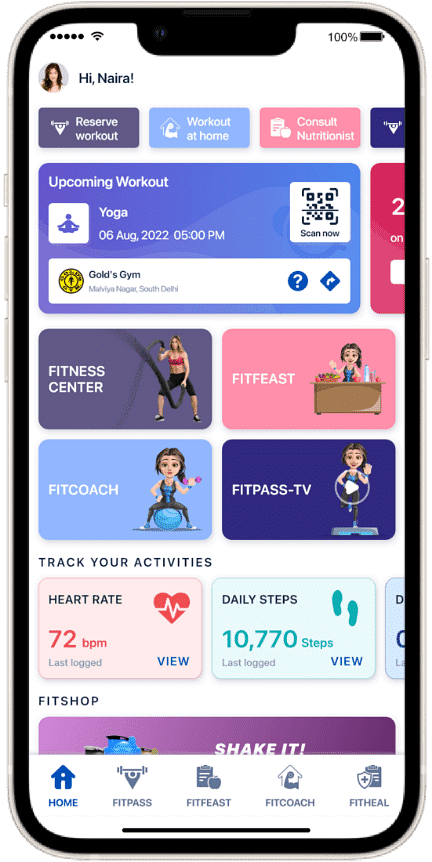How to Start the OMAD Diet: A Beginner's Guide
Table of Contents
What is the OMAD Diet?
The OMAD diet is One Meal A Day, which allows you to enjoy one meal every 24 hours. This form of intermittent fasting simplifies your eating routine by condensing your entire day's nutrition into a single meal. The diet appeals to many because it reduces the time spent planning and preparing multiple meals. However, while it sounds simple, sticking to this plan can be challenging, especially for beginners.
Benefits of the OMAD Diet

The OMAD diet has many advantages, so it appeals to people seeking an efficient, easy-to-moderate food intake. One of the most frequently mentioned advantages is weight loss. Limiting your food intake to a single meal reduces calorie consumption, which can lead to weight loss. Some individuals prefer one big meal rather than trying to manage portions across several meals.
Another advantage is it regulates blood sugar. Research has indicated that DM cure-inducing fasting periods like those observed with the OMAD diet improve the insulin sensitivity of individuals, hence helping them manage blood glucose levels. Additionally, many people experience mental benefits such as increased focus and clarity during fasting periods, allowing for better productivity.
Risks and Drawbacks
While the OMAD diet seems great, it has its downside, too. In the early stages of this diet, some may feel weak and feel low on energy. These symptoms are normal and are often caused by the body's need to adapt to a lengthy fasting period. Some people find it hard to focus or engage in any strenuous activity due to the long period of fasting.
Concerns are expressed about whether the OMAD diet affects metabolic rate or not. Some experts suggest that prolonged fasting may lead to a decreased metabolic rate due to long hours without food intake. However, further research is needed to support these claims. Also, inadequate intake of certain nutrients may happen if the single meal you consume is not properly balanced. This is why it is important to see a professional before starting the OMAD diet, especially if you have any health issues.
How the OMAD Diet Works
The OMAD diet is quite simple. It basically boils down to a fast of about 23 hours, during which you only eat in a window of one hour. This diet is supposed to give your body enough time for fasting to break down stored fat for use as fuel.
There is no rule of thumb for when to eat on the OMAD diet. Some like to eat in the evening when all their work is done for the day, and others say it's okay to have their meal in the morning during lunch. The best time to eat on the OMAD diet depends on personal preferences.
Planning Your OMAD Diet Meals

If you only eat once a day, you should make sure one meal has all the nutrients your body needs. The meal should be filled with nutrient-rich foods, which can comprise enough vegetables, whole grain-based foods, lean proteins, and healthy fats. All these will keep you full longer and provide your body with the vitamins and minerals it needs to perform well throughout the day.
Staying hydrated is also crucial for OMAD. Drink plenty of water during your fasting cycle, and you may even supplement it with electrolytes to maintain energy levels.
Preparing for the OMAD Diet

It can be overwhelming to start the OMAD diet if you're used to eating many meals a day. One good approach to getting into it is gradually increasing the duration of fasting. For example, you could start with the 16:8 fasting window (fasting for 16 hours and eating in an 8-hour time frame) and then work your way up to only consuming a single meal a day. This would help your body adjust without putting too much unnecessary stress or discomfort on it.
Use the eating window to engage in mindful eating. Eat slowly and savour what you take in; it'll allow you to enjoy your food much better and avoid overindulgence. Just because you're eating one meal a day does not mean you can overeat. You are eating to get a balanced, satisfying meal that feeds your body.
It is also nice to develop a support network. Whether by being online and finding communities or taking friends and family into your fold, having people to share your journey with can motivate you greatly.
Challenges of the OMAD Diet
Like any diet, the OMAD diet is not without challenges. The most common challenge is fatigue. Because you will be spending most of the day in a fasting state, energy dips are to be expected, especially when first starting. Arm yourself with nutrient-rich foods during meals and plenty of water throughout the day.
Another is hunger pangs. Initially, you would have pangs of hunger throughout the fasting window. You can support this with water or electrolyte-rich drinks, and soon enough, your body will adapt to the new eating schedule, and you'll hardly experience hunger.
Conclusion
The OMAD diet offers a unique approach to eating, with potential benefits like weight loss, improved mental clarity, and simplified meal planning. However, it's important to approach the diet cautiously, especially if you're new to fasting. Start slowly, listen to your body, and focus on nutrient-rich meals. Remember, it's always a good idea to consult with a healthcare professional before making major changes to your diet.
Ready to take the first step? Start by experimenting with fasting windows and planning your meals carefully to ensure you're getting all the nutrition you need. For more personalised advice and customised diet plans, check FITFEAST.

What is the OMAD diet?
The OMAD diet stands for One Meal A Day, where you consume only one meal within a 24-hour period to help with weight loss and health benefits.
Is the OMAD diet safe for beginners?
The OMAD diet can be safe, but it’s important to consult a healthcare professional, especially if you’re new to fasting or have health conditions.
What are the benefits of the OMAD diet?
OMAD diet benefits include weight loss, improved blood sugar control, better mental clarity, and increased insulin sensitivity.
What should I eat on the OMAD diet?
Focus on nutrient-dense foods like vegetables, lean proteins, whole grains, and healthy fats to ensure you get all the essential nutrients in one meal.
Does the OMAD diet slow metabolism?
Some studies suggest prolonged fasting may slow metabolism, but more research is needed. It’s important to monitor your body’s response.


